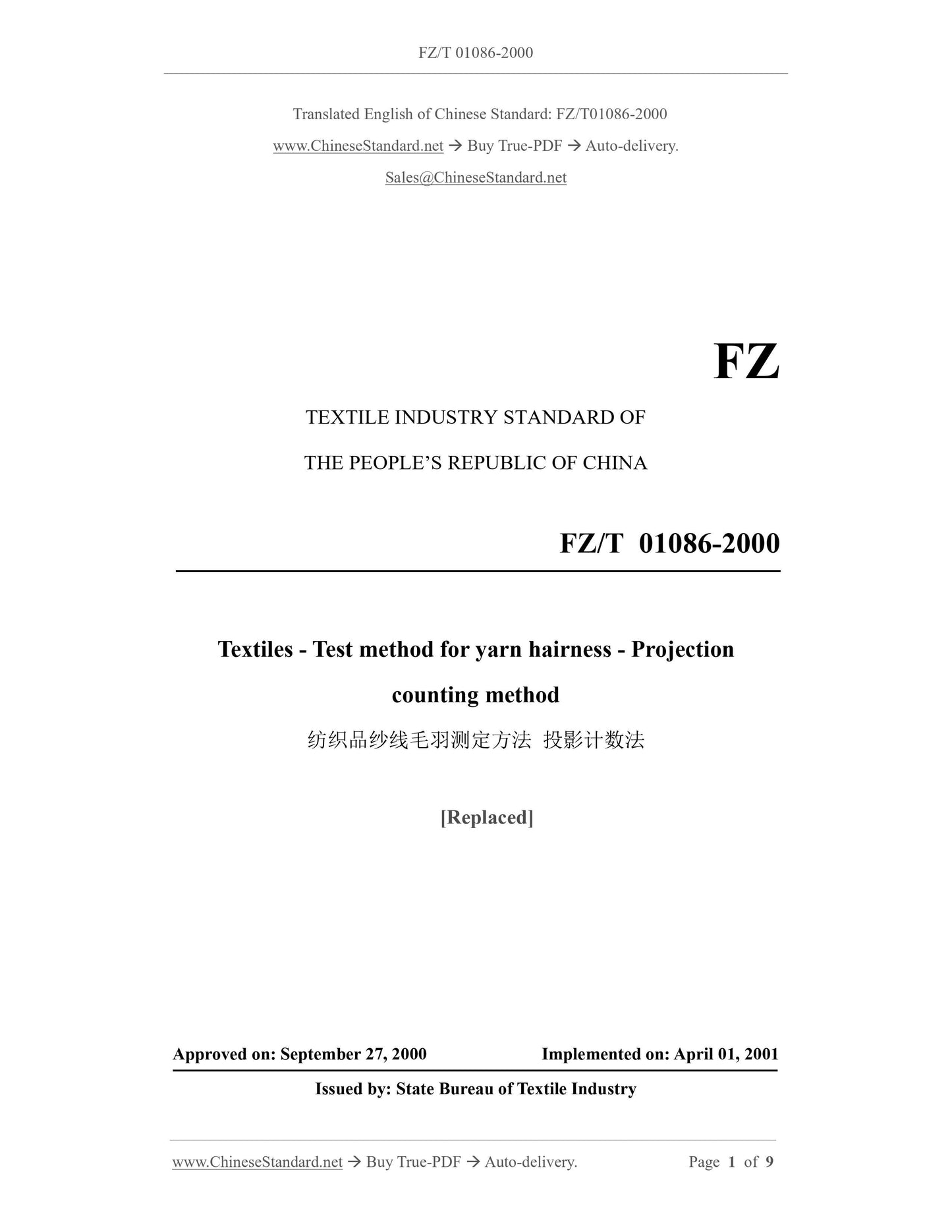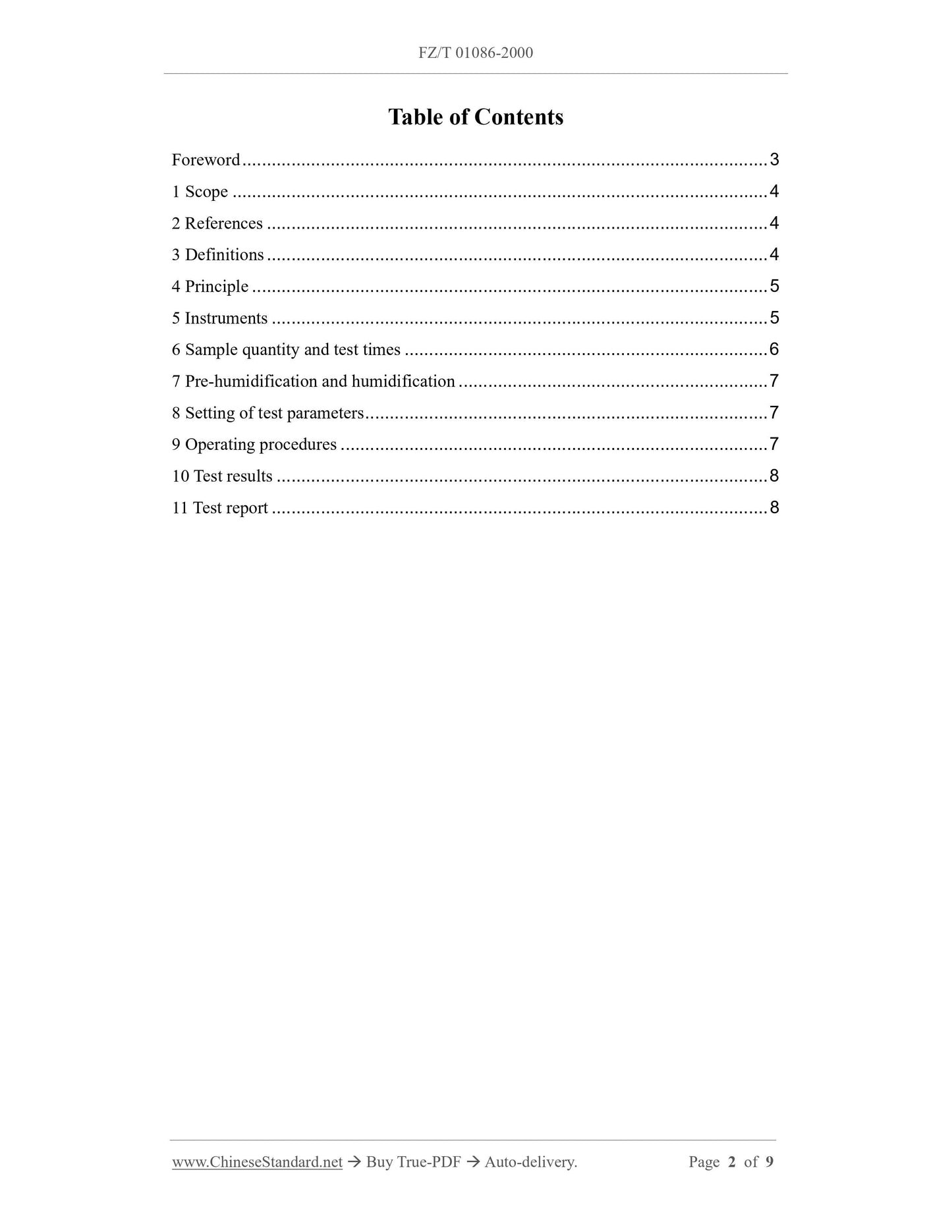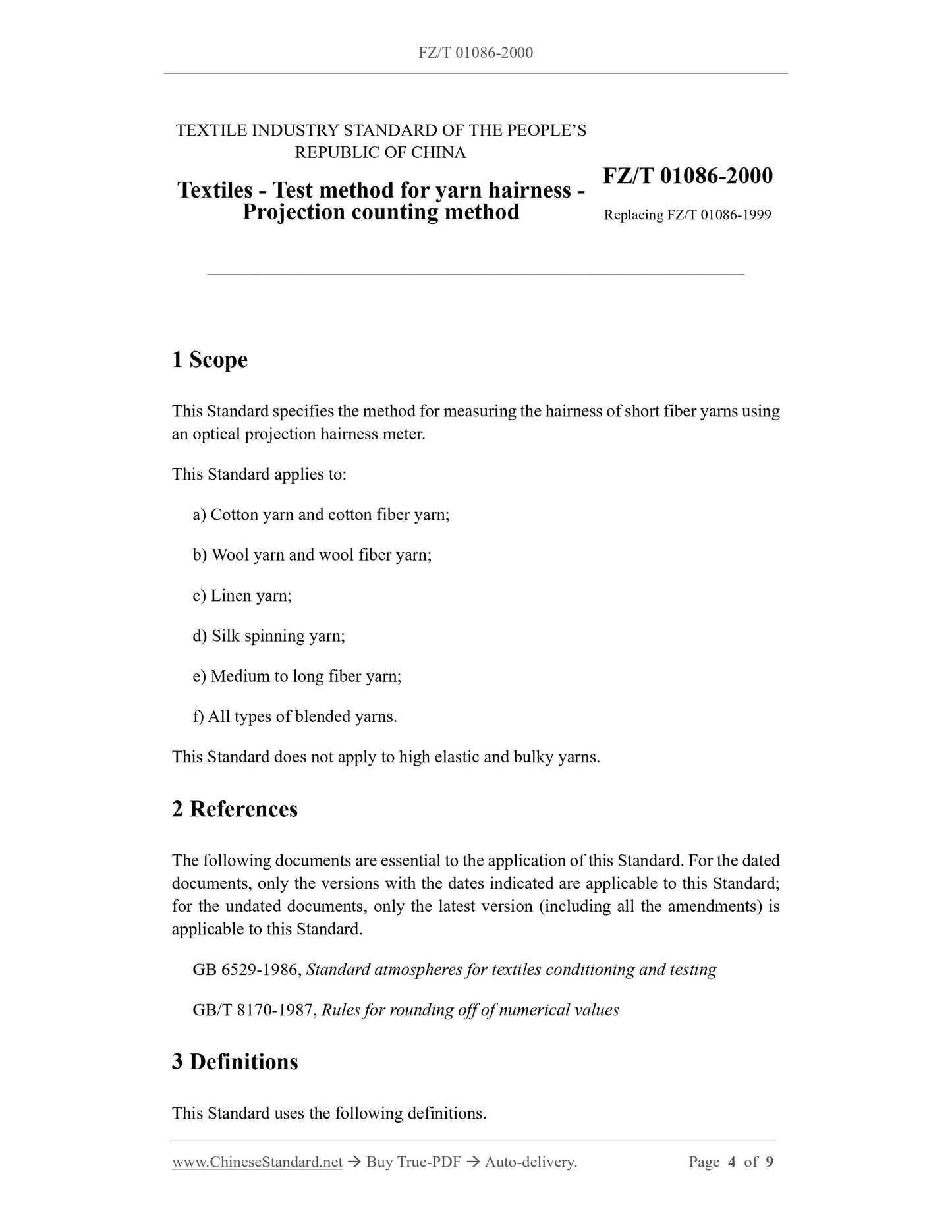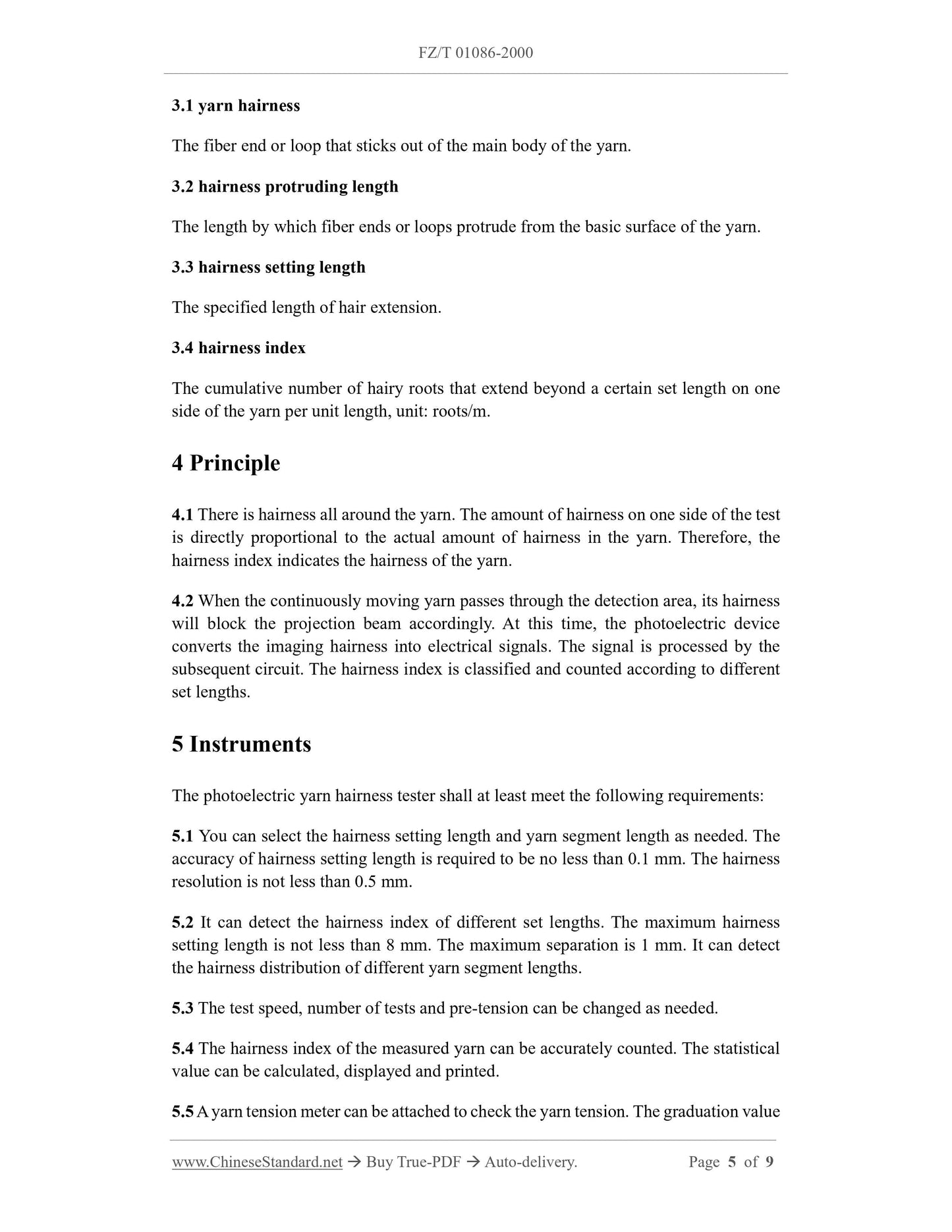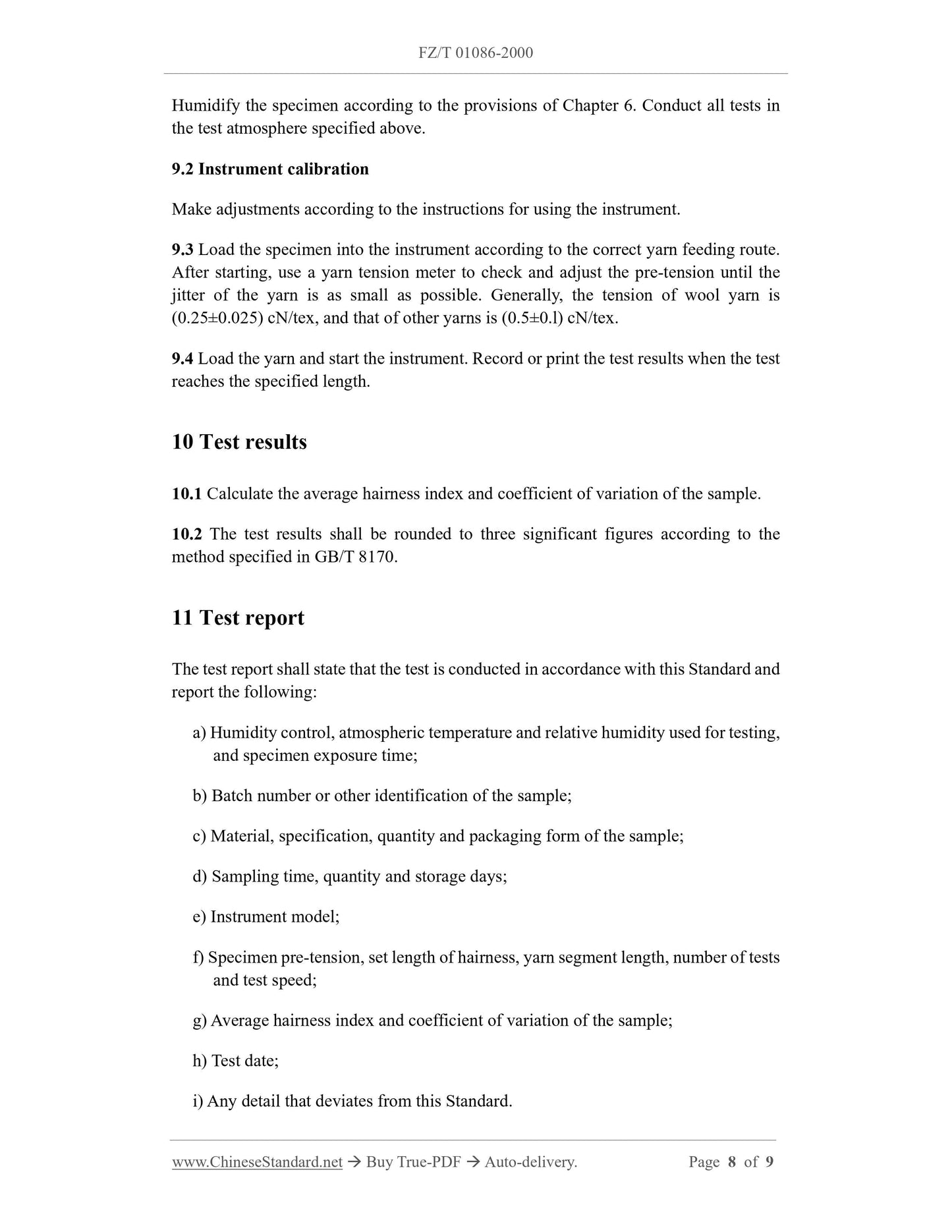1
/
of
5
PayPal, credit cards. Download editable-PDF and invoice in 1 second!
FZ/T 01086-2000 English PDF (FZ/T01086-2000)
FZ/T 01086-2000 English PDF (FZ/T01086-2000)
Regular price
$235.00
Regular price
Sale price
$235.00
Unit price
/
per
Shipping calculated at checkout.
Couldn't load pickup availability
FZ/T 01086-2000: Textiles - Test method for yarn hairness. Projection counting method
Delivery: 9 seconds. Download (and Email) true-PDF + Invoice.Get Quotation: Click FZ/T 01086-2000 (Self-service in 1-minute)
Newer / historical versions: FZ/T 01086-2000
Preview True-PDF
Scope
This Standard specifies the method for measuring the hairness of short fiber yarns usingan optical projection hairness meter.
This Standard applies to:
a) Cotton yarn and cotton fiber yarn;
b) Wool yarn and wool fiber yarn;
c) Linen yarn;
d) Silk spinning yarn;
e) Medium to long fiber yarn;
f) All types of blended yarns.
This Standard does not apply to high elastic and bulky yarns.
Basic Data
| Standard ID | FZ/T 01086-2000 (FZ/T01086-2000) |
| Description (Translated English) | Textiles. Test method for yarn hairness. Projection counting method |
| Sector / Industry | Spinning and Textile Industry Standard (Recommended) |
| Classification of Chinese Standard | W04 |
| Classification of International Standard | 59.010 |
| Word Count Estimation | 6,673 |
| Date of Issue | 2000-09-27 |
| Date of Implementation | 2001-04-01 |
| Older Standard (superseded by this standard) | FZ/T 01086-1999 |
| Quoted Standard | GB 6529-1986; GB/T 8170-1987 |
| Issuing agency(ies) | State Bureau of Textile Industry |
| Summary | This standard specifies the optical projection apparatus for staple fiber yarn hairiness hairiness measurement method. This standard applies to: a) type of cotton yarn and cotton yarn, b) wool yarn and wool yarn, c) flax yarns, d) silk yarn, e) long fiber yarn, f) all kinds of blended yarn. This standard does not apply to high elasticity and bulky yarns. |
Share
